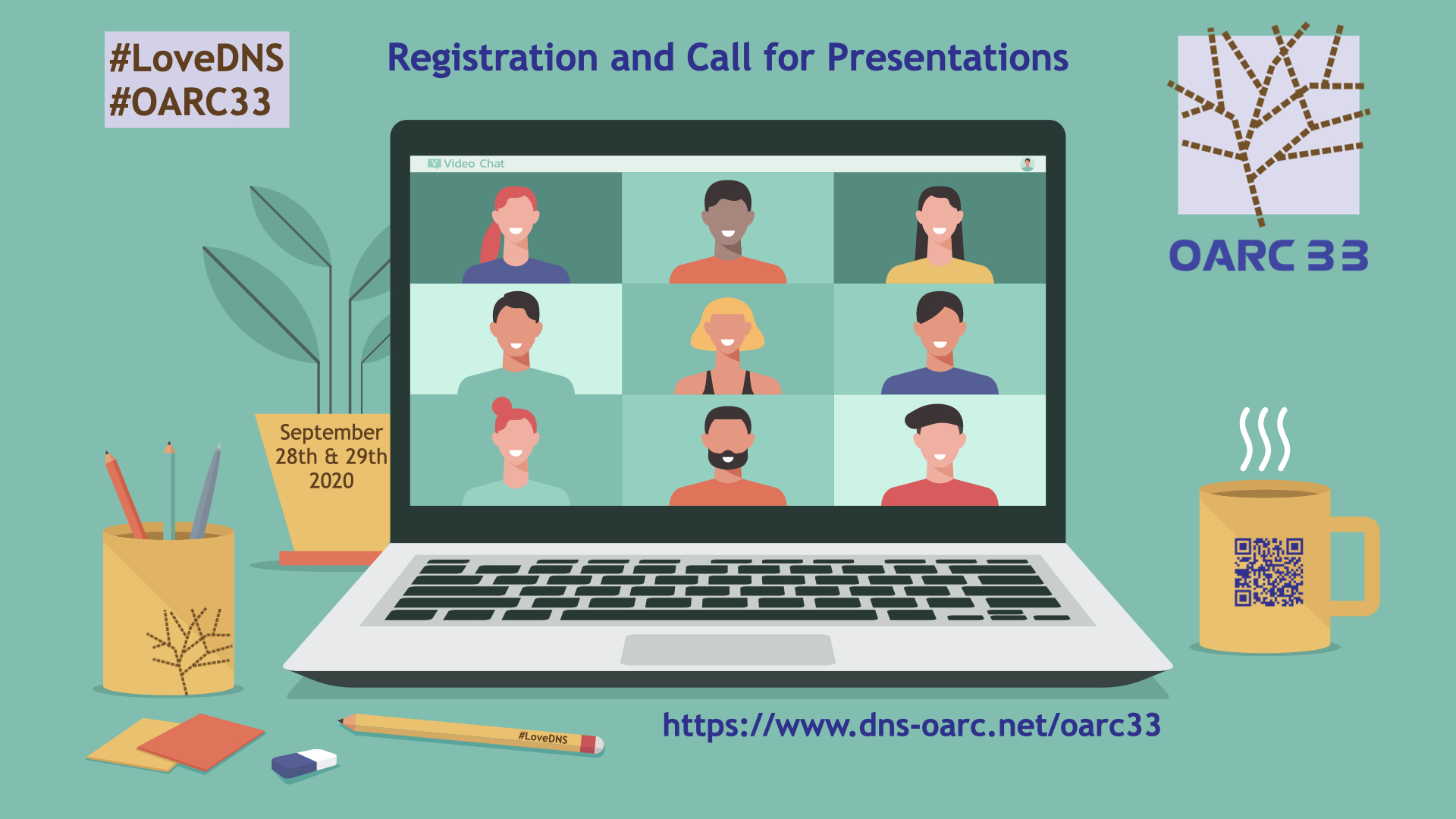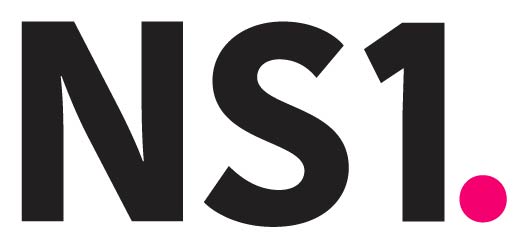- Indico style
- Indico style - inline minutes
- Indico style - numbered
- Indico style - numbered + minutes
- Indico Weeks View
OARC 33 (Online)AGM
→
UTC
,
Description
OARC 33 will be an online Workshop.
 |
DNS-OARC is a non-profit, membership organization that seeks to improve the security, stability, and understanding of the Internet's DNS infrastructure. Part of these aims are achieved through workshops.
DNS-OARC Workshops are open to OARC members and to all other parties interested in DNS operations and research.
Social Media hashtag: #OARC33
Mattermost Chatroom: Workshops on chat.dns-oarc.net (sign-up here)
WORKSHOP PATRONS 2020
PROMOTER
 |
Annual Workshop Patrons for 2020 are available. Details at:
https://www.dns-oarc.net/workshop/patronage-opportunities
OARC 33 SPONSORS
Online Workshop Sponsor
 |
Sponsorship opportunities for OARC 33 are available. Details at:
https://www.dns-oarc.net/workshop/sponsorship-opportunities
OARC 33 Admin
Participants
Ali Hussein
Allison Mankin
Anand Buddhdev
Andreas Pantelopoulos
Anthony Lieuallen
Anton Holleman
Arsen Stasic
Ash Wilson
Atanas Argirov
Baula Xu
Becca McCary
Benno Overeinder
Bill Belanger
Brantly Millegan
Brett Carr
Brian Dickson
Brian King
Brian Somers
Bryan Hughes
Bryan Olynyk
Chris Cherry
Christian Petrasch
Cricket Liu
Dan Kriz
Daniel Mahoney
Daniel Stirnimann
Dave Knight
David Blacka
David Lawrence
Denesh Bhabuta
Dipa Thakkar
Dmitry Kohmanyuk
Duane Wessels
Eduardo Mercader
Edward LEWIS
Elmar K. Bins
Emil Filipov
Eric Kimathi Mwobobia
Eric Ziegast
Gavin McCullagh
Geert Verheyen
Geoff Huston
George Michaelson
Giovane Moura
Guillaume-Jean Herbiet
Guillermo Cicileo
Gustavo Lozano Ibarra
Han Zhang
Henri Laakso
Hiro Hotta
Jacques Latour
Jake Zack
James Richards
James Shank
Jan Včelák
Jarle Fredrik Greipsland
Jaromír Talíř
Jeff Osborn
Jerry Lundström
Jim Hague
Joao Luis Silva Damas
Joe Abley
Joey Salazar
John Todd
Jonas Andersson
Jorge Cano
Karl Reuss
Kazunori Fujiwara
Keith Mitchell
Ken Hansen
Ken Renard
Klaus Darilion
Kyle Schomp
Larry Campbell
Leslie Osei
Lu Zhao
Maarten Bosteels
Maarten Wullink
Marc Groeneweg
Marco Diaz
Mark Peterson
Mat Ford
Matthew Gray
Matthew Pounsett
Matthias Pfeifer
Mauricio Vergara Ereche
Merike Kaeo
Michael Braunöder
Michael De Frees
Michael Jewell
Milos Milosavljevic
Moritz Müller
Neda Kianpour
Nicolai Leymann
Nicolas Antoniello
Omokorede Fatile
Ondrej Sury
Otto Moerbeek
Pallavi Aras
Paul Adair
Paul Ebersman
Paul Hoffman
Paul Muchene
Peter DeVries
Peter Janssen
Peter van Dijk
Petr Špaček
Phil Regnauld
Piet Barber
Pieter Lexis
Prashanth Suvarna
Priya Mohan
Puneet Sood
Raffaele Sommese
Ralf Weber
Ralph Dolmans
Ray Bellis
Richard Olsen
Robert Edmonds
Robert Story
Robert Šefr
Roger Murray
Roland Dobbins
Sam Cheadle
Samuel Weiler
Sara Dickinson
Shane Kerr
Shannon Weyrick
Shivan Sahib
Shumon Huque
Siôn Lloyd
Stefan Ubbink
Steve DeJong
Susan Graves
Suzanne Woolf
Swapneel Patnekar
Terry Bernstein
Tim Wicinski
Tomáš Křížek
Tongfeng Zhang
Tyler Stanton
Ulrich Wisser
Vicky Risk
Vincent Levigneron
Vittorio Bertola
Vladimír Čunát
Warren Kumari
Wayne MacLaurin
Wes Hardaker
Willem Toorop
Yang Li
Ye Chen
Zarko Kecic
